You'll get the best results for deep-rooted plants by choosing fertilizers rich in phosphorus and potassium, with balanced NPK ratios like 10-30-20 or 5-10-5. Top options include organic compost, bone meal, fish emulsion, kelp-based fertilizers, and growth hormone-enhanced formulas with mycorrhizal fungi. Slow-release granular fertilizers, liquid root stimulants, and mineral concentrates offer targeted nutrition delivery. Your deep-rooted plants need specialized care to access their full growth potential.
Understanding Root Zone Nutrition Requirements
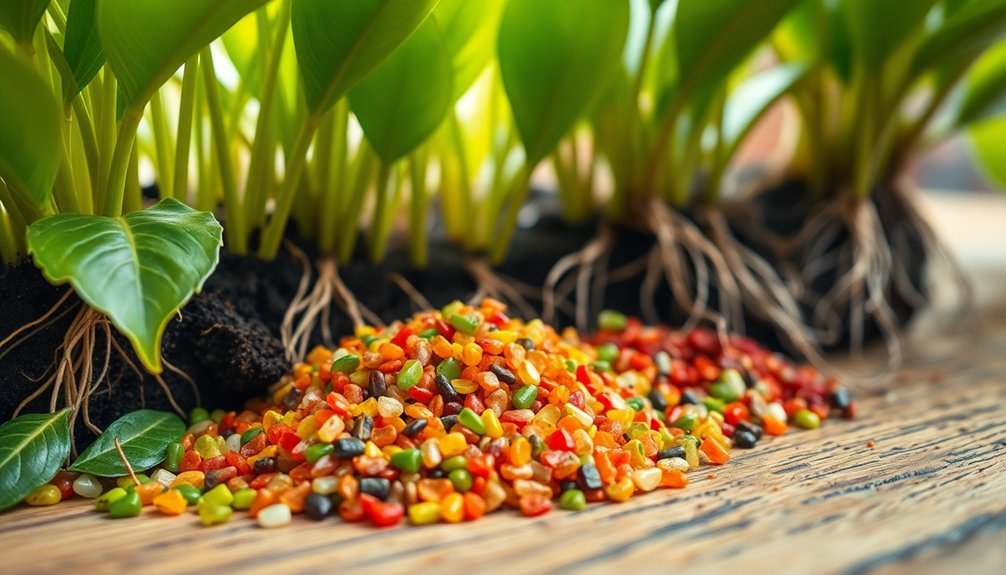
When it comes to successful plant growth, understanding root zone nutrition forms the foundation of healthy plant development.
Your deep-rooted plants need essential nutrients, particularly phosphorus and potassium, to develop strong root systems that can effectively absorb water and minerals from the soil.
You'll want to focus on fertilizers with higher P and K values in their NPK ratios, as these directly support root development and water transportation.
Consider incorporating organic ingredients like compost, rock phosphate, and chicken manure to provide steady nutrient release.
Deep root fertilization techniques guarantee these nutrients reach the critical root zone where they're needed most.
Remember to regularly check your plants' root health and nutrient levels, as this will help you identify and address any deficiencies before they impact your plants' health.
Organic Matter-Rich Fertilizers for Strong Root Development
Since healthy roots depend on nutrient-rich environments, organic matter-rich fertilizers serve as powerhouse solutions for developing robust root systems.
You'll find that incorporating materials like compost and well-rotted manure not only enhances soil structure but also creates an ideal environment for beneficial microorganisms. These natural fertilizers support root development while improving your soil's ability to retain moisture.
- Kelp and fish emulsion provide essential micronutrients that strengthen root growth
- Potassium-rich greensand helps roots transport water and nutrients more effectively
- Mycorrhizal fungi enhance your plants' nutrient absorption capabilities
- Regular organic fertilizer applications during growing season promote deeper root systems
Slow-Release Options for Sustained Root Growth
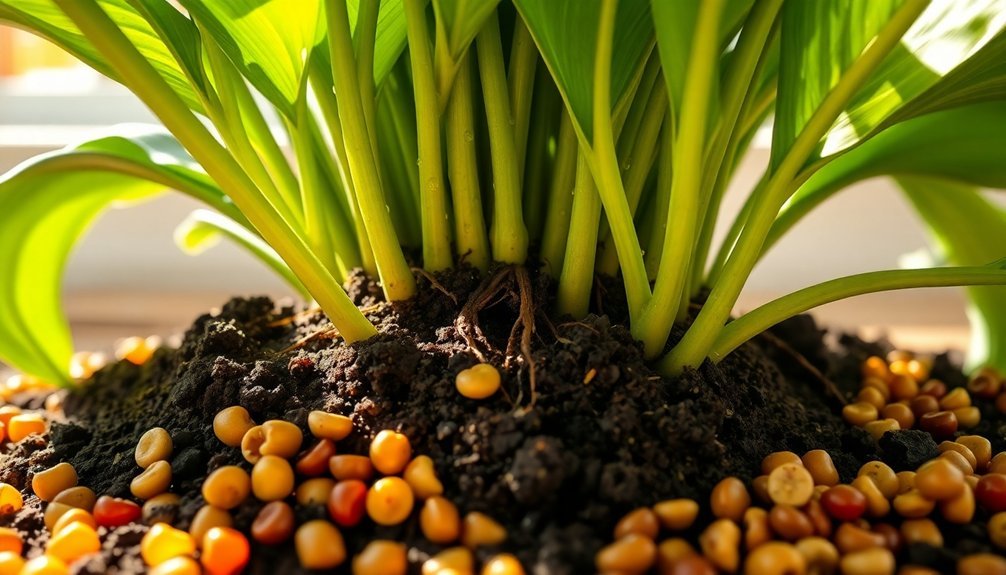
Your deep-rooted houseplants can thrive with slow-release fertilizers like Osmocote Plus, which supply essential nutrients steadily for up to 6 months while promoting robust root development.
You'll find these fertilizers particularly convenient, as their protective coating guarantees gradual nutrient distribution without the risk of root burn or the need for frequent reapplication.
For the best results with your slow-release fertilizer choice, you should carefully follow the product's specific application guidelines, typically scheduling treatments every 3-6 months to maintain ideal root growth.
Extended Nutrient Release Benefits
While traditional fertilizers require frequent reapplication, slow-release options offer a game-changing advantage for nurturing your plants' root systems.
You'll find that extended nutrient release provides consistent nourishment over 3-6 months, supporting deep-root growth without the risk of nutrient burn.
- Improves soil quality by enhancing microbial activity and nutrient absorption
- Guarantees steady nutrient availability throughout the growing cycle
- Reduces maintenance time with fewer required applications
- Prevents nutrient peaks and valleys common with traditional fertilizers
Your deep-rooted plants will benefit from slow-release fertilizers' coated granules, which dissolve gradually to maintain peak nutrient levels.
Products like Osmocote Plus Smart-Release deliver a balanced nutrient profile that's specifically designed for long-term feeding, making it easier for you to maintain healthy, thriving plants with minimal effort.
Top Slow-Release Product Options
Several high-performing slow-release fertilizers have revolutionized how gardeners approach plant nutrition.
You'll find Osmocote Plus Smart-Release Plant Food leading the pack, offering a balanced blend that supports healthy root development through consistent nutrient delivery over 3-6 months.
When you're selecting slow-release fertilizers for your deep-rooted plants, look for granular options that contain beneficial microorganisms.
These organisms enhance soil quality and improve your plants' ability to absorb nutrients efficiently. You can easily incorporate these granules during planting or repotting sessions, ensuring your plants receive steady nourishment as they grow.
If you're a busy gardener, you'll appreciate how these products reduce maintenance time while preventing over-fertilization risks.
Their controlled release mechanism matches your plants' nutritional demands, promoting sustained, vigorous growth throughout the growing season.
Application Timing Guidelines
When planning your fertilization schedule, understanding the ideal timing for slow-release products can make a significant difference in your plants' root development.
You'll want to start by applying these fertilizers in early spring, approximately 8 weeks before the last frost, to support peak root growth during the active growing season.
- Mix the fertilizer into the top inch of soil during planting or repotting to guarantee proper nutrient accessibility.
- Monitor your plants regularly for signs of nutrient deficiency to adjust application timing if needed.
- Apply once annually for established deep-rooted plants to maintain consistent growth.
- Time your applications to align with the 3-6 month release period for maximum effectiveness.
Remember that proper application timing of slow-release fertilizers helps prevent nutrient burn while providing sustained nourishment for healthy root development throughout the growing season.
Beneficial Microorganisms and Root Health
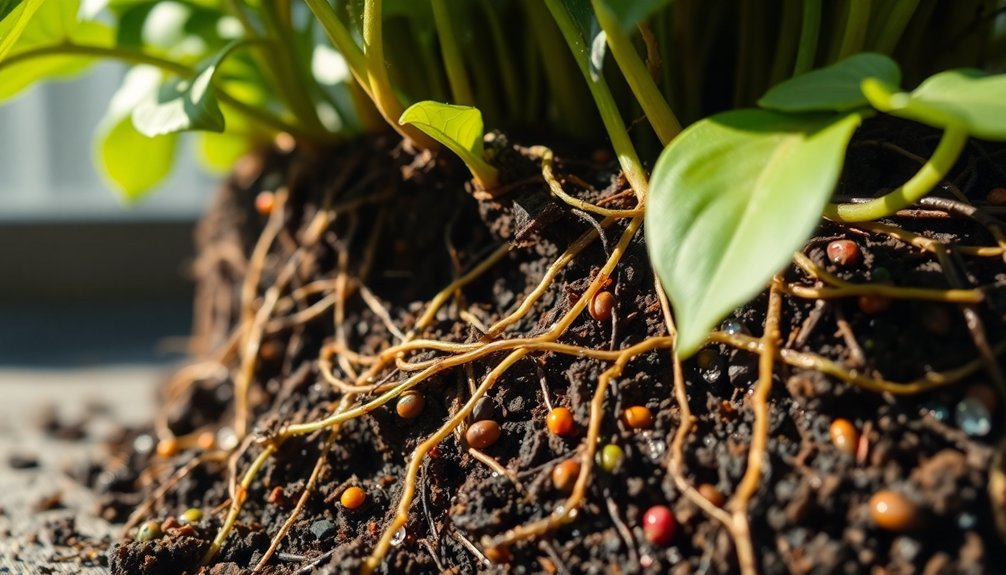
Just as a healthy gut microbiome benefits human health, beneficial microorganisms in soil form an essential partnership with plant roots.
These microscopic allies extend your organic houseplant's root system, improving its ability to absorb water and nutrients from the soil.
When you maintain a thriving population of beneficial microbes in your potting mix, they'll break down organic matter and convert it into readily available nutrients for your plants.
They're also natural defenders, suppressing harmful pathogens that could damage your plant's roots.
You'll notice improved plant vigor as these microorganisms stimulate growth hormones and enhance overall root development.
Consider adding microbial inoculants to your fertilizer routine – they'll boost root biomass and create a stronger foundation for your plants to thrive.
Phosphorus-Based Formulas for Root Establishment
For best root establishment, you'll want to select a fertilizer with a high middle number in the NPK ratio, like 10-30-20, which releases phosphorus directly into the root zone.
Strategic placement of phosphorus-rich fertilizers near developing roots helps maximize nutrient uptake and encourages deeper root penetration into the soil profile.
You can enhance phosphorus absorption by incorporating organic matter and maintaining soil pH between 6.0 and 7.0, creating ideal conditions for root development.
High-Phosphate Nutrient Release Methods
Although many gardeners focus on nitrogen-rich fertilizers, high-phosphate formulas play an important role in establishing strong root systems for your plants.
You'll find that phosphorus (P) is vital for energy transfer and tissue formation, directly impacting root growth and overall plant health.
To maximize your plants' root development, consider these effective nutrient release methods:
- Apply fertilizers with NPK ratios like 8-27-2, where the high middle number indicates strong phosphorus content
- Incorporate nutrients directly into the root zone for best absorption efficiency
- Use organic options such as rock phosphate or bone meal for steady, long-term nutrient release
- Mix high-phosphate fertilizers into the soil before planting to guarantee immediate access to nutrients
Root Zone Penetration Mechanics
Understanding how phosphorus-based fertilizers penetrate the root zone can dramatically improve your plants' growth success.
When you select fertilizers with higher N-P-K ratios in the middle number, like 10-30-20, you're providing concentrated phosphorus (P) that's essential for root development.
Your deep-rooted plants need this phosphorus to establish strong foundation systems. You'll want to apply these P-rich formulas during early growth stages when roots are actively developing.
By incorporating the fertilizer directly into the root zone, you're ensuring maximum nutrient absorption where it matters most.
Don't forget to check your soil's phosphorus levels regularly. If you notice stunted growth or poor vigor in your plants, it's likely time to supplement with additional P-based fertilizers to support healthy root development and overall plant establishment.
Phosphorus Uptake Enhancement Tips
While establishing healthy roots requires proper nutrient balance, enhancing phosphorus uptake can make the biggest impact on your plants' foundation.
You'll want to focus on fertilizers with higher middle numbers in their NPK ratio, like JR Peters Jacks Classic 10-30-20, to boost root development and nutrient absorption.
- Check your soil's pH regularly, keeping it between 6.0 and 7.0 for ideal P uptake
- Apply organic solutions like MycoApply Soluble Maxx to improve phosphorus solubility
- Choose fertilizers specifically formulated for root growth, with higher phosphorus content
- Incorporate rock phosphate as a slow-release option for sustained nutrient delivery
When you're prioritizing root establishment, remember that phosphorus plays a vital role in energy transfer and tissue development.
It's important to maintain consistent phosphorus levels to support your plants' long-term growth and stability.
Growth Hormone Enhanced Fertilizers
When it comes to supercharging your plants' growth, hormone-enhanced fertilizers offer a powerful solution by combining traditional nutrients with growth-promoting compounds.
You'll find that growth hormone enhanced fertilizers contain essential auxins and cytokinins that stimulate root development and strengthen your plants' overall health.
These specialized fertilizers work by improving nutrient uptake efficiency, allowing your plants to access more resources from a larger soil volume.
Products like MycoApply Soluble Maxx even include beneficial fungi that form symbiotic relationships with roots, further enhancing their absorption capabilities.
By incorporating these fertilizers into your gardening routine, you'll notice significant improvements in your plants' resilience to environmental stresses like drought.
The results are visible through stronger root systems, lusher foliage, and increased productivity in your garden.
Liquid Root Stimulants and Their Benefits
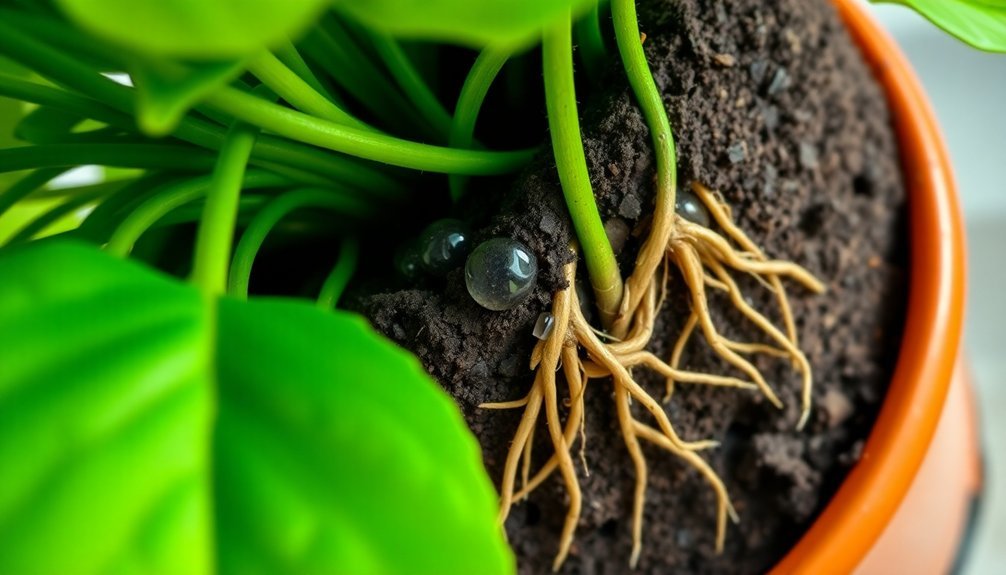
Building upon the power of hormone-enhanced fertilizers, liquid root stimulants offer gardeners another effective tool for maximizing plant growth potential.
These liquid fertilizers deliver essential nutrients directly to your plant's root zone, ensuring faster absorption and better nutrient utilization. You'll notice a significant difference in developing a healthy plant system when you apply these stimulants during active growth periods.
- Contains crucial nutrients, vitamins, and amino acids for robust root development
- Features beneficial microorganisms that enhance soil structure
- Provides precise dosing capabilities for targeted application
- Improves water retention and stress resistance
[DIRECTIONS]:
Mineral Concentrates for Deep Root Systems
Your deep-rooted plants can absorb essential nutrients more effectively when you place mineral concentrates directly in their root zones.
You'll see the best results by distributing these concentrated minerals throughout different soil depths, ensuring complete coverage for developing root systems.
The trace elements in mineral concentrates will penetrate deeply into the soil profile, providing sustained nutrition that strengthens your plants' root development and overall health.
Primary Nutrient Absorption Methods
Deep-rooted plants thrive on specific mineral concentrates that deliver essential nutrients directly to their extensive root systems.
You'll find that proper nutrient uptake depends on strategic fertilizer placement and the incorporation of organic matter in the root zone.
To maximize your plants' nutrient absorption, consider these key methods:
- Apply phosphorus and potassium-rich fertilizers directly into the root zone for immediate access
- Integrate beneficial fungi and bio-stimulants to enhance nutrient uptake efficiency
- Add compost or humic acids regularly to support crucial microbial activity
- Use concentrated formulations like rock phosphate and sylvite for targeted delivery
Your deep-rooted plants will respond best when you combine these methods, ensuring nutrients are readily available where they're needed most.
This targeted approach supports robust root development and overall plant health.
Root Zone Mineral Distribution
Proper mineral distribution in the root zone directly impacts a plant's long-term health and growth potential.
When you're using deep root fertilization techniques, you'll want to focus on products that deliver nutrients straight to where they're needed most.
To maximize your plants' nutrient uptake, choose mineral concentrates rich in phosphorus and potassium, like Gravity L Amp 8-27-2. These elements are essential for developing strong root systems and ensuring ideal growth.
You can enhance the effectiveness of root zone distribution by incorporating beneficial fungi and bio-stimulants, which improve soil structure and mineral absorption.
For sustained nourishment, consider organic deep root fertilizers such as Sustane 12-0-1 HI-N WDF. They'll provide consistent mineral distribution throughout the growing season, helping your plants maintain vigor and resilience over time.
Deep Penetrating Trace Elements
While most gardeners focus on major nutrients, trace elements play an essential role in developing strong, deep root systems.
Deep penetrating trace elements like iron, manganese, and zinc are vital for your plant health, as they support essential biochemical processes. You'll find that combining these elements with humic acids improves soil structure and enhances nutrient accessibility.
To maximize root development, consider these key components:
- High concentrations of potassium and phosphorus for robust root growth
- Beneficial fungi from products like MycoApply Soluble Maxx to increase root surface area
- Humic acids to enhance soil structure and trace element penetration
- Regular deep root fertilization schedule to maintain consistent nutrient availability
Natural Root Zone Enhancers
Natural root zone enhancers serve as nature's own growth catalysts for your plants, combining essential organic materials like compost, humic acid, and mycorrhizal fungi to create ideal growing conditions.
You'll find products like MycoApply Soluble Maxx particularly effective for maximizing root growth and nutrient uptake in your deep-rooted plants.
For best results, incorporate Gravity L Humic Base into your soil care routine.
It'll improve your soil's ability to retain nutrients while promoting robust root development.
Complement these natural and organic solutions with Sustane 12-0-1 HI-N WDF, which feeds beneficial microbes while providing essential nutrients.
When you're dealing with compacted soil, adding soil conditioners during deep root fertilization will create space for roots to expand and thrive, ensuring your plants develop strong, extensive root systems.
Balanced NPK Ratios for Root Development
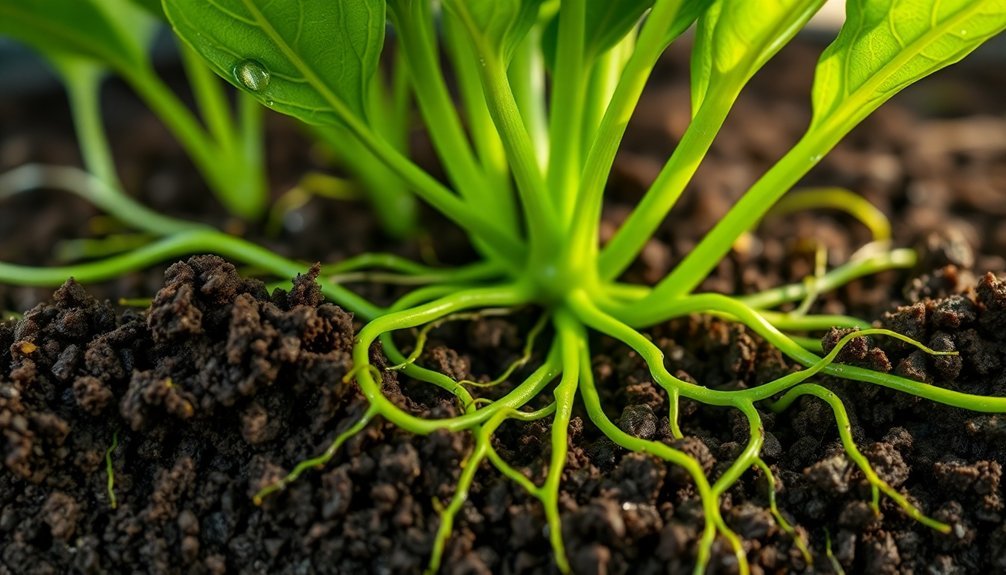
Understanding balanced NPK ratios serves as your foundation for successful root development.
When you're aiming for deep, robust roots, you'll need a balanced mix of nutrients, with phosphorus playing an essential role in energy transfer and tissue formation.
You'll find that fertilizers with higher potassium (K) content help your plants transport nutrients and water more efficiently throughout their root systems.
- Choose fertilizers with ratios like 10-10-10 or 5-10-5 for ideal root development
- Incorporate bone meal into your soil to boost phosphorus levels naturally
- Apply fertilizers regularly during active growing seasons
- Monitor your plants' response to guarantee the nutrient balance is appropriate
Frequently Asked Questions
What Is the Best Fertilizer for Deep Roots?
You'll achieve the best deep-root growth using high-phosphorus fertilizers like Gravity L Amp 8-27-2, combined with root stimulators and humic acids. These promote strong root development and enhance nutrient absorption.
What Fertilizer Is Best for an Indoor Plant?
You'll get great results with a balanced 2-2-2 fertilizer like Espoma Organic Indoor Plant Food. If you're busy, try Osmocote's slow-release option, or use Miracle-Gro's water-soluble formula for quick nutrient delivery.
Is 10-10-10 Fertilizer Good for House Plants?
Yes, 10-10-10 fertilizer is good for most houseplants as it provides balanced nutrition. You'll find it works well for general plant growth, but you should always follow label directions to avoid over-fertilizing your plants.
What Is the Best Homemade Fertilizer for Indoor Plants?
You'll get great results by mixing equal parts water and compost for your indoor plants. You can also use banana peel solution, diluted coffee grounds, crushed eggshells, or Epsom salt water for natural nutrient boosting.
In Summary
Your success with deep-rooted plants depends on choosing the right fertilizer and applying it correctly. Remember to match your fertilizer choice to your specific plants' needs and growth stages. Whether you're using organic matter, slow-release formulas, or specialized root stimulants, consistency is key. Don't forget to monitor your plants' response and adjust accordingly. With these fertilizer options, you'll create the perfect foundation for thriving root systems.
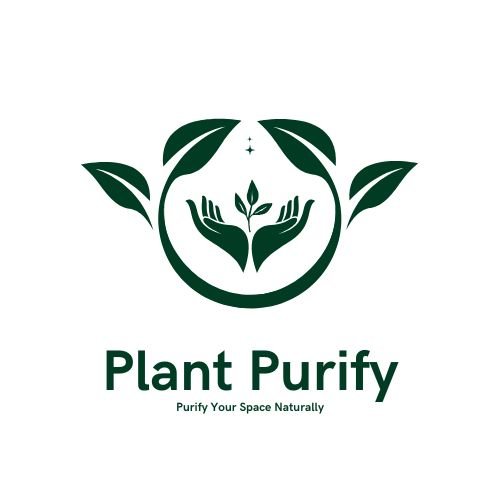

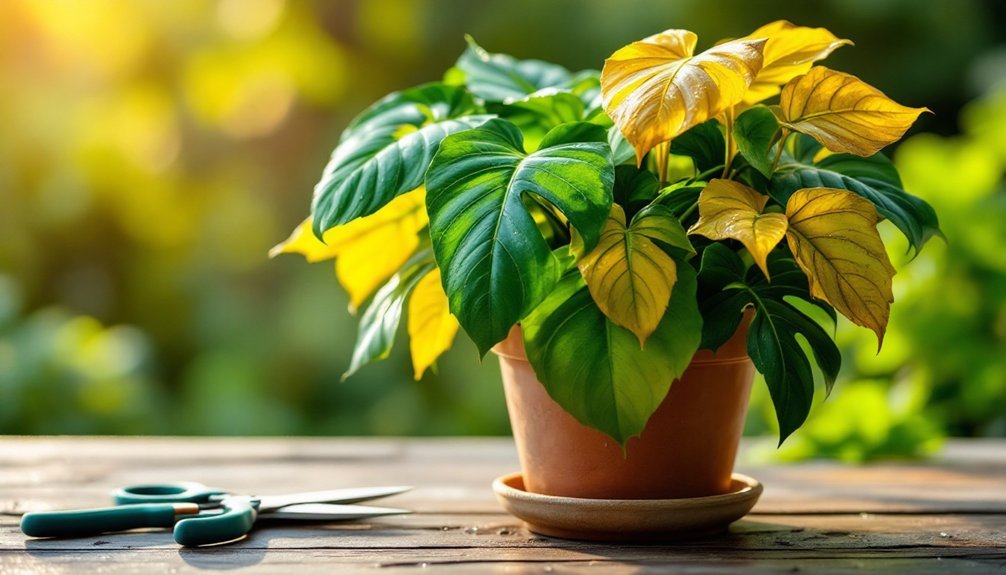


Leave a Reply